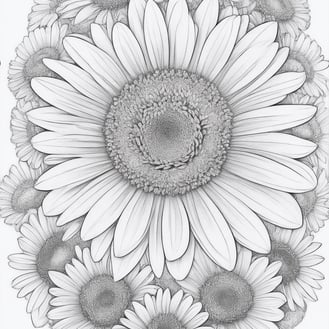Coloring Pages: A Stress-Relieving Activity for All Ages
Coloring, once considered a simple childhood pastime, has emerged as a powerful therapeutic tool for both adults and children. This creative activity offers a range of mental health benefits, particularly in stress reduction and anxiety management.
10/4/20242 min read
Coloring, once considered a simple childhood pastime, has emerged as a powerful therapeutic tool for both adults and children. This creative activity offers a range of mental health benefits, particularly in stress reduction and anxiety management.
Stress Relief and Relaxation
Coloring has been shown to be an effective method for alleviating stress and promoting relaxation. The act of coloring engages the brain in a way that allows individuals to disconnect from stressors and focus on the present moment. "Adult coloring is a healthy, enjoyable way to alleviate stress. It gently calms the brain, inviting your body to unwind and relax".
This calming effect can lead to improved sleep quality, reduced fatigue, and a decrease in feelings of depression and anxiety.
Anxiety Reduction
Research has demonstrated the positive impact of coloring on anxiety levels. A 2017 study involving female university students found that participants who engaged in daily coloring for a week reported reduced anxiety and depression compared to those who solved logic puzzles.
The repetitive nature of coloring appears to play a crucial role in this effect. As psychologist Michele Goldman explains, "The repetitive movement of coloring can be soothing and calming for some people who have high stress and heightened anxiety".
Mindfulness and Present-Moment Awareness
Coloring promotes mindfulness by encouraging individuals to focus on the task at hand. "As you immerse yourself in choosing colors and staying within the lines, the world around you fades away".
This focused attention on the present moment can help reduce rumination on past events or worries about the future, contributing to overall mental well-being.



Clinical Applications
The therapeutic benefits of coloring extend beyond general stress relief and have shown promise in clinical settings. A randomized controlled study involving patients with generalized anxiety disorder (GAD) found that adding coloring therapy to conventional treatment resulted in significant improvements. "For GAD patients, adding coloring therapy based on conventional drug therapy and physical therapy can not only reduce depression and negative emotions but also have better effects on reducing anxiety and improving positive emotions than conventional therapy".
Accessibility and Ease of Use
One of the key advantages of coloring as a therapeutic activity is its accessibility. It requires minimal resources and can be practiced almost anywhere. "Compared with other psychotherapies, coloring therapy is not related to objective factors such as patients' cognitive ability, language, age, and drawing skills, and is favored by researchers because it is time saving, safe, efficient, and free from site constraints".
In conclusion, the therapeutic effects of coloring are well-documented and wide-ranging. From stress relief and anxiety reduction to promoting mindfulness and improving clinical outcomes, coloring offers a simple yet effective tool for enhancing mental health. As research continues to explore its benefits, coloring is likely to remain a valuable component of both self-care routines and therapeutic interventions.
Source:
https://www.ncbi.nlm.nih.gov/pmc/articles/PMC9773305/
All Coloring
Gallery of free coloring pages to print.
Ads
© 2024. All rights reserved.
